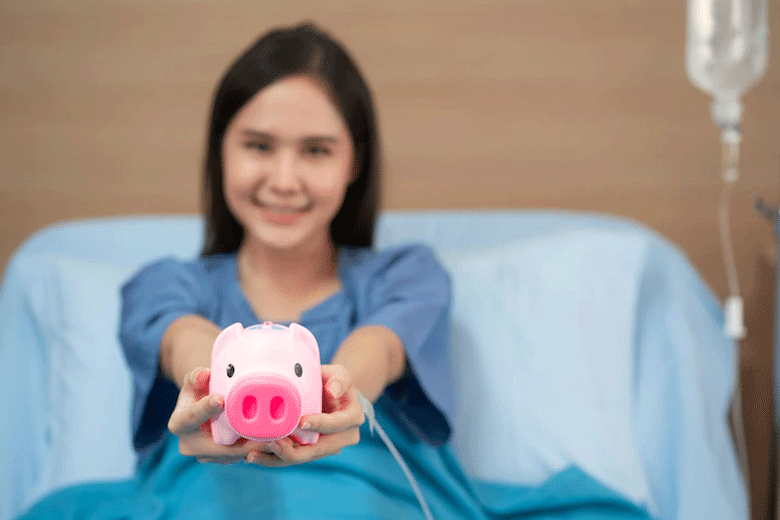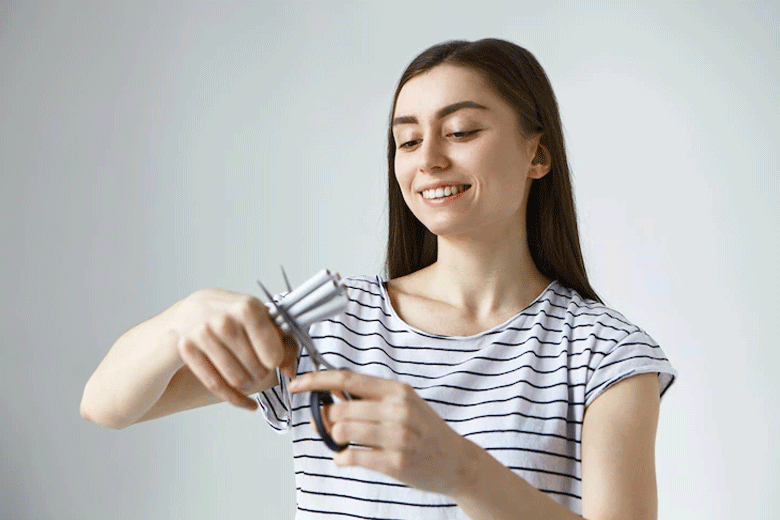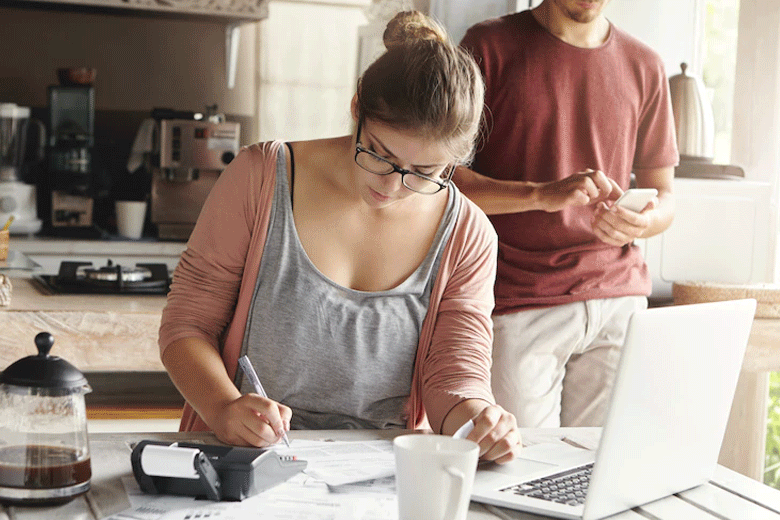
If you’ve ever had the trouble of having a car break down or finding yourself in need of some extra cash, you know how inconvenient it can be. Luckily, there are ways to keep your finances healthy and secure—and one of them is an emergency fund.
Why Do You Need To Set Up An Emergency Fund?
In reality, you should expect the unexpected, and when these emergencies with financial implications happen, it can be very expensive. Most financial experts agree that the first thing you should do after you’ve met your basic needs is to reduce your spending and start an emergency fund.
Financial emergencies come in the form of a job loss, car or home repairs, medical expenses, or something you can never predict. Most of us have experienced these setbacks and their related bills, but how do we cover this unforeseen expense? Unfortunately, many people don’t plan for emergencies in their monthly budget and are forced to take on expensive credit card debt or loans to cover the bills, which only adds to the pain.
An emergency fund is known to be an easily accessible amount of money for you to make use of only in the event of an emergency. It’s not to be used to buy new clothes, a new car, or a new TV for your bachelor pad. It’s a kind of insurance for you and your family.
Having the extra cash on hand to cover unexpected expenses has two benefits;
- Firstly, it gives you peace of mind. Knowing that you’ve got the money to cover any emergency that’s thrown at you will stop you from stressing and worrying if and when it happens. You simply send money from your emergency fund into your checking account—emergency avoided.
- Secondly, it helps you move forward financially. Instead of taking on more debt to cover emergency expenses, an emergency savings fund will prevent you from getting into a further financial mess.
Where to Keep Your Emergency Fund

It would be appropriate to start with a savings account because it is easy to use and accessible. While it may be tempting to tie your money up in a CD or mutual fund, those saving methods make getting your money difficult when you need it most. So, opt for normal savings or checking accounts with your local or online bank. Then, as your account grows, you can start looking into finding a saving method that’ll earn higher interest rates.
How Much Should Be in Your Emergency Fund?
Most financial experts agree that you should have enough money in your emergency fund to cover 3-6 months of basic living expenses. You want to have three to six months of expenses saved up because emergency funds are normally needed due to a sudden loss of income.
If you or your partner lose a job and you still have bills to pay, it may take a few months to find new employment. It’s always best to plan for a worst-case scenario so that smaller emergencies, such as repairing your car that just broke down, will be easily covered.
How Do You Get Started?
If you don’t have an emergency fund or find it hard to save money, then the key is to start off small. Some experts believe that you should create a $1,000 emergency fund before you start working on paying off any outstanding debts. Doing so gives you a small cushion for emergency expenses instead of putting yourself into further debt by using credit cards or loans.
After you’ve paid off the debt, you can then concentrate on building an emergency fund to cover 3-6 months of basic living expenses.
Other experts believe that you should pay off your debt before starting an emergency fund since the cost of debt is usually much higher than the benefit gained from savings. Therefore, you pocket more cash by getting rid of the debt rather than starting to save.
However, if the interest rate on your debt is less than the amount your savings earn after tax, you can gain from building up your emergency fund and keeping the debts, assuming that you’re financially disciplined. Experts also argue that because there is no guarantee that you’ll ever need your emergency fund, not paying off serious debts first, such as credit cards, is a big mistake.
Whether you pay your debt off before or after starting an emergency fund depends on your personal preference and current situation. By saving small amounts of cash each month, I was able to save over $1,000 before my debts were repaid. I also ensured that if I used any cash from my emergency account, I’d replenish it as soon as possible. This plan worked for me.
I’m guessing that you might think, “Saving $1,000 sounds good in theory, but how can I save that amount when I’m already struggling financially?”
Saving $1,000 as quickly as possible can seem overwhelming. However, with the right strategies in place, you’ll be able to save $1,000 in no time at all. The key to realizing a thousand-dollar emergency fund in a short amount of time include;
- Increase your income quickly.
- Cut big expenses.
There are too many ways to cut down on expenses and increase your income. So here are a few strategies that helped me build my $1,000 emergency fund in just two months.
Stay In On The Weekends.
It may seem like a bore to do, but it’s worth it in the long run. On an average weekend, I’d go out Friday and Saturday nights and spend $50–$100 each time. By limiting myself to just one night out a month, I was able to save at least $300. I just had to find other things to do on the weekends and invite my friends over to my place instead of going out.
Quit Smoking and Drinking.

Quitting smoking had been a goal of mine for a long time, but I kept failing. I figured that, as I wasn’t going out every weekend, it was the best time to quit (fewer temptations). I also only drank alcohol socially, so quitting drinking also seemed like a good way to save money. For me, I spent more than $5 a day on smoking – and when I quit, it freed up $150 a month for savings.
Save your change.
Don’t spend any coins that you get. When you have gotten home at the end of the day, empty your pockets into a savings jar. Afterward, go to the bank and put it into your savings. Do the same with $1 bills. It is surprising how quickly it all adds up.
Sell Unwanted Items On eBay.
Selling stuff that I no longer needed on eBay went a long way toward helping me achieve my $1,000 goal. I gathered all the stuff I hadn’t used for months and sold it. In total, I netted about $200 and put it straight into my emergency fund savings account. It also freed up space in my apartment.
Get a Second Job.

You’re probably already a busy man. But if you are committed to getting your finances in order, you’ll need to make some sacrifices to reach your goal. If you’ve got specific skills, why not take them to the market as a freelancer? Or get a weekend or evening part-time job.
Cut Unnecessary Expenses
If you’ve got two cars, you can probably live without one of them. This is something I’ve done with my partner for years. Having only one car saves you a lot of money on car insurance payments and other car repairs and expenses. If you have cable TV, consider getting rid of it. To be honest, most of the shows on there are rubbish or repeats. Depending on your current plan, you can easily save $20–$100 per month.
Building Your Emergency Fund Beyond $1,000
Once you’ve saved $1,000, building an emergency fund with three to six months of living expenses may seem impossible.
Don’t be scared or overwhelmed by the size of the goal. You’ve already added $1,000 to your emergency fund, so why can’t you save more? Taking small steps will eventually get you there.
I’m currently working on this goal right now. It will take some time to realize it, but I know I’ll get there. Below are two strategies that are helping me reach my goal.
Take what you were paying in debt every month and put it in your emergency fund. Once I had saved $1,000 for my emergency fund, I concentrated on paying off my debt. Once I paid off my debt, I started taking the money that I’d been using each month towards debt reduction and putting it in my emergency fund. I’ve never noticed the difference, as I already had money allocated in my budget to pay off debt. Now that my debt no longer exists, I can use the money to achieve my new goal.
Make Savings Automatic
I’ve put my savings on auto-pilot, meaning that I’m able to automatically transfer a set amount of money from my current checking account to my emergency fund every month once I’ve been paid my monthly salary.
Your Take Away
You should probably be saving for an emergency fund, even if you don’t think you need one right now. You can never predict when something will happen that will leave you without enough money to get back on your feet. If nothing else, having a little bit aside will give you peace of mind, knowing that if anything ever happens with your job or income source (or both), there will always be some money waiting for you when life gets tough again.
Also, read Emergency Funds: How to Generate Quick Money in an Emergency by Tanisha McDowell. It was written just for you, 101 Ways to Generate Quick Funds. This creative booklet will be just up your alley if you’re always looking for fresh ways to create and save money.
- McDowell RN, Tanisha (Author)
- English (Publication Language)
- 54 Pages - 01/24/2022 (Publication Date) - Independently published (Publisher)

